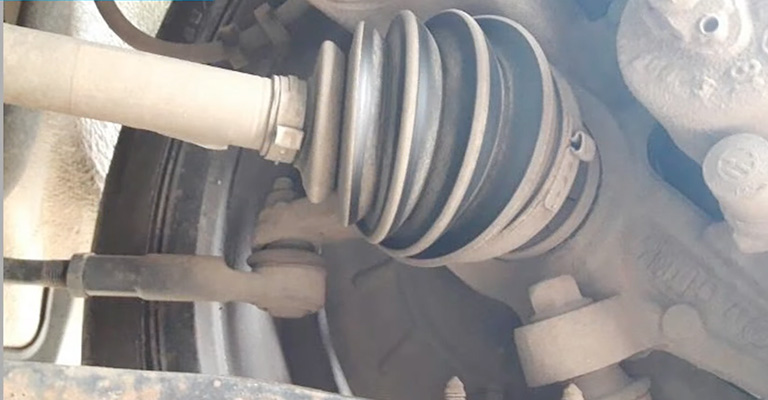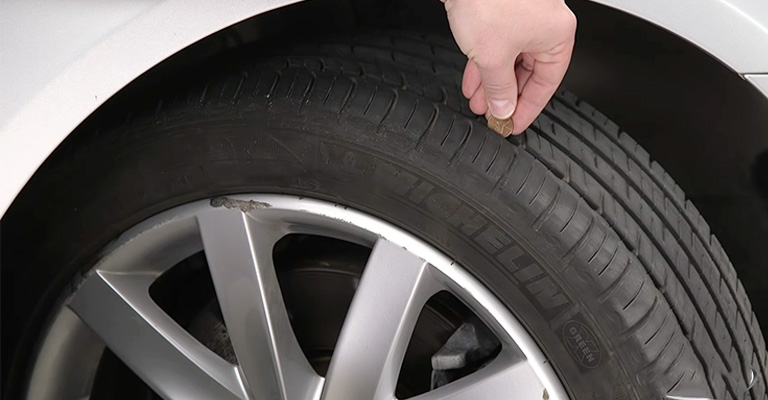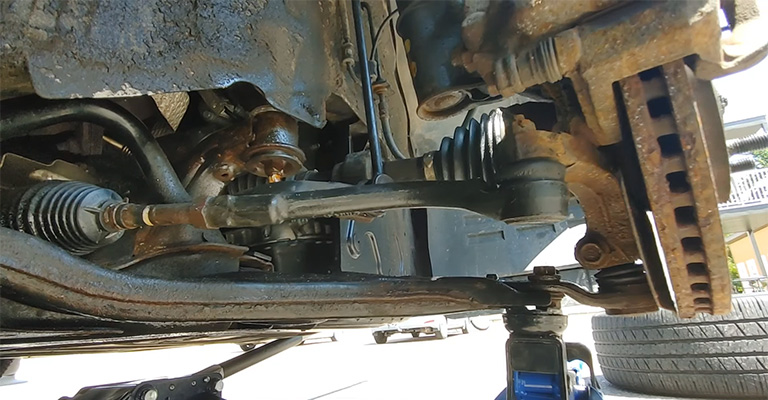A CV joint is a common feature you’ll find in most all-wheel drive vehicles, front-wheel drive vehicles, and some rear-wheel drive vehicles. It ensures power is transferred to the wheel while the suspension is moving. Therefore, this part is vital in affecting the functionality of the car as it moves forward or backward.
However, like other components of a car, CV joints are prone to issues and damage. Faulty CV joints could even make driving impossible because you are not able to control the vehicle. Therefore, this article aims to enlighten you on how to identify signs or symptoms of a bad CV joint and what causes it.

What is a CV Joint, and how does it work?
A constant velocity (CV) joint is a mechanical joint found at the end of a drive shaft and connects the drive shafts to the transmission and wheels.
As outlined above, the main function of CV joints is to help transfer power to the wheels consistently and smoothly from the transmission regardless of the angle of the steering wheel. They are made to handle the up-and-down movement that travels through the suspensions.
What Causes CV Joint Damages?

There are several things that could damage your CV joints. The most common cause is shock loading (when a spinning wheel lifts off the ground and then lands hard on the ground). It causes a crack in the CV joint cage/boot, leading to grease leakage and faster wearing. Consequently, dirt and water enter the CV joint, increasing friction between the joints and other parts and fastening the wearing.
Overloading a vehicle beyond its capacity can also easily stress the CV axles and damage the CV joints.
However, well-maintained CV joints may last around 50,000 to 120,000 miles depending on your driving style, driving condition, car model, and maintenance practices.
What are the Symptoms of a Bad CV Joint?
Below are the five most common symptoms/signs that help you identify bad CV joints:
The flow of grease on the edges of tires

CV joints have boots that are used to contain grease from leakage while the axle spins. Therefore, when the boot is damaged, worn out, or cracked, it ends up leaking the grease/lubrication. Often the grease pours on the rims and inner side of the tires. You could also notice grease drops on the ground beside your wheel after parking for a while.
Signs of darker-colored grease show that your CV joints are significantly damaged.
This is one of the common signs and easiest ways to tell you to have a bad CV joint. It also means that you shouldn’t hesitate to have your car checked and replace the entire CV joint as soon as possible.
Turning causes loud noises

When you turn the steering wheel and hear a noise like a screeching metallic noise or clicking sound, it’s a sign you’re running on a damaged or worn-out CV joint. If you notice the nose grows louder and louder every time you turn, the closer you’re to a total failure.
You may consider going to an open and wide area where you can drive slowly in a circle as you listen, just to be sure which CV joint is faulty.
Excessive vibration while driving

There are many things that cause a car’s vibration; worn or damaged CV joints are one issue you cannot ignore. A damaged CV joint cause a car to lose balance as the wheels rotate; therefore, the more you accelerate, the more vibration becomes intense. Consequently, it becomes more difficult to control the vehicle, and the drive is quite uncomfortable.
It’s important you go for a car inspection as soon as you notice excessive vibration while driving.
Knocking or growling sounds from the wheel movement
If you notice a growling or knocking sound in a rhythmic manner inner joints (for front-wheel drive cars), it’s a sign of worn-out or damaged CV joints. The sound may also come from the inner or outer joints of rear-wheel drive cars.
Bad CV joints make your car’s axle wobble, which causes a growling sound. You can diagnose by yourself by accelerating and decelerating the vehicle in reverse mode.
If you notice the noise gets louder and louder, you need to get a mechanic to check your car as soon as possible.
A bouncy driving

Bad CV joints often cause bouncy driving. You’re likely to experience some difficulty in controlling the car and bouncy ride, even when driving on a flat road or smooth pavement.
Conclusion
Above are the main signs of bad or failing CV joints in most cars. If you notice any of the signs, don’t hesitate to get the problem fixed. If the severity of damage on your CV joints is less, you can still drive for a short distance. However, this is risky and can easily lead you to an accident if the CV joint fails completely as you drive.
Notably, if you decide to do a CV joint replacement yourself, ensure you’ve all the necessary tools and truly know how to do it. A repair manual of that particular car could also be significant before attempting any repairs. This kind of repair can be a difficult and greasy job. More importantly, consider replacement with genuine CV joints.
Leave a Reply